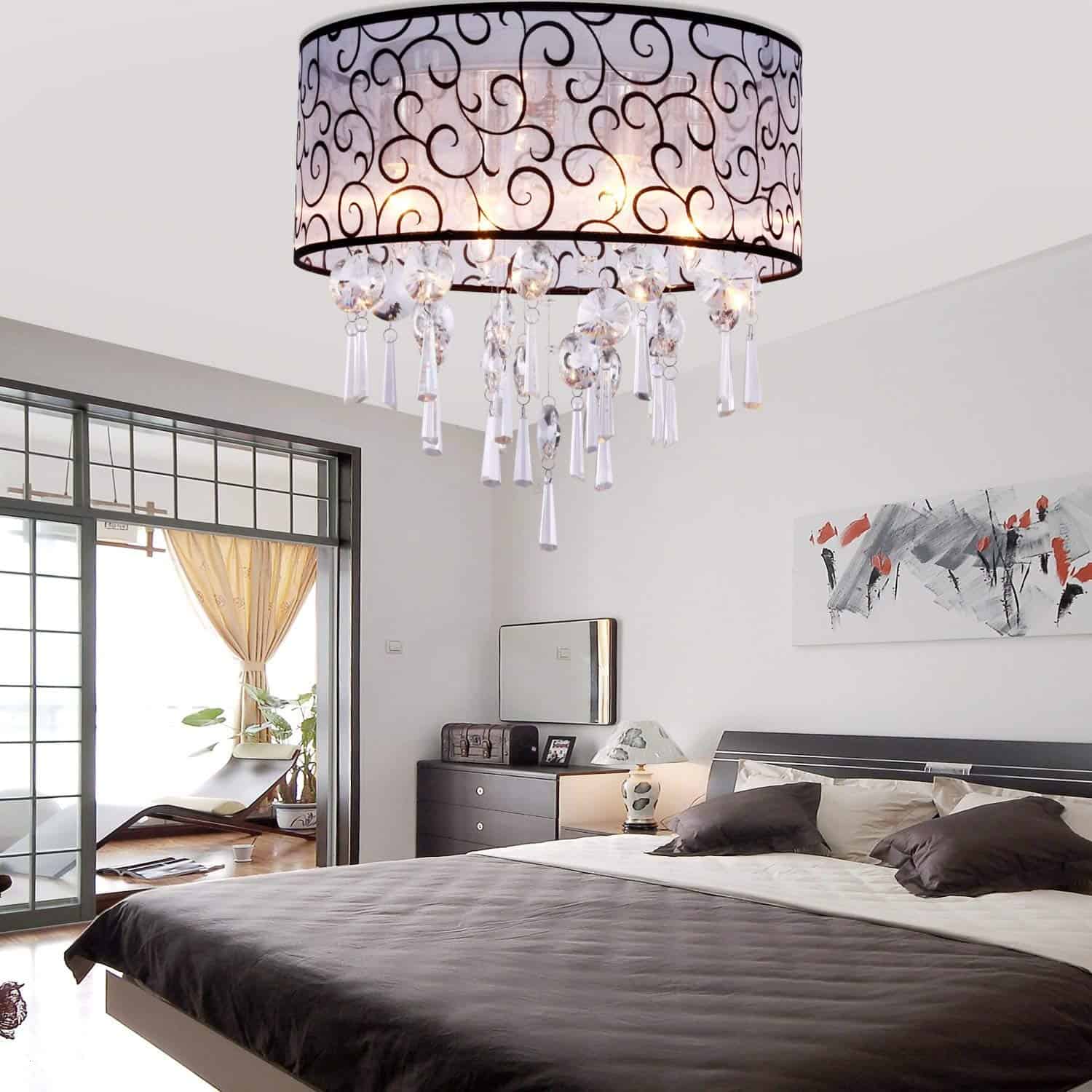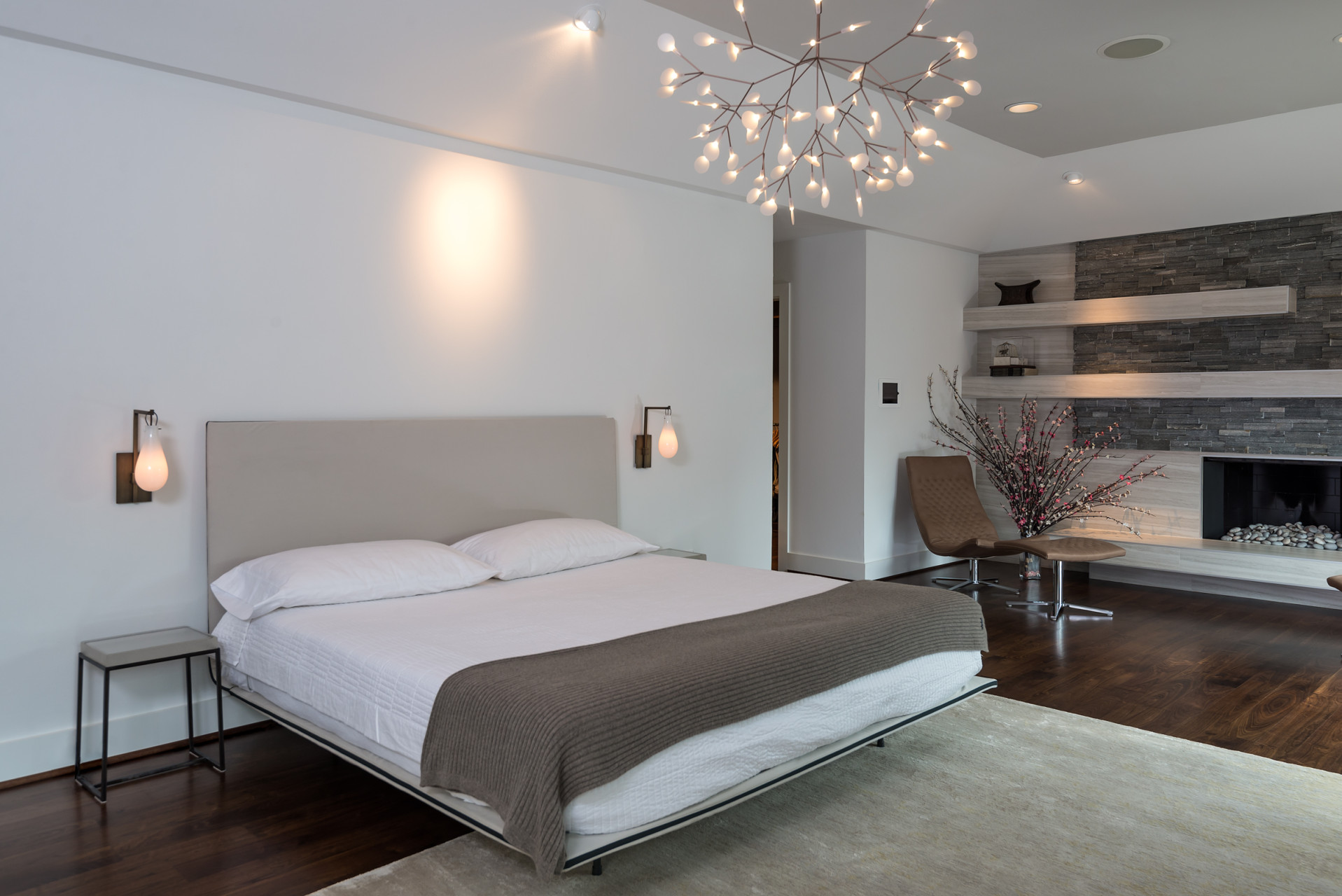Choosing the Perfect Hanging Lamp Shade for Your Bedroom

A hanging lamp shade can be a stylish and functional addition to your bedroom, providing both illumination and a decorative focal point. Choosing the right shade can significantly impact the overall ambiance and aesthetic of your space. This guide will explore key factors to consider when selecting a hanging lamp shade for your bedroom, ensuring it complements your personal style and enhances your bedroom’s atmosphere.
Types of Hanging Lamp Shades
The type of hanging lamp shade you choose should align with your bedroom’s style and the desired ambiance. Here are some popular types of hanging lamp shades, each with its unique characteristics:
- Drum shades: These cylindrical shades are known for their versatility and classic appeal. They offer even light distribution and are suitable for various bedroom styles, from contemporary to traditional.
- Bell shades: These wide-mouthed, bell-shaped shades create a soft and inviting glow, ideal for a cozy and romantic atmosphere. They work well in bedrooms with traditional or farmhouse decor.
- Empire shades: Empire shades feature a wide base that tapers towards the top, resembling a cone. They add a touch of elegance and sophistication to any bedroom, especially those with modern or minimalist decor.
- Coolie shades: These conical shades, inspired by traditional Chinese lanterns, provide a unique and eclectic look. They are often made from paper or fabric and can create a warm and inviting atmosphere in bedrooms with bohemian or eclectic decor.
- Tiffany shades: These intricate and colorful shades, often featuring stained glass designs, add a touch of vintage charm and artistic flair to a bedroom. They are well-suited for bedrooms with Victorian or Art Deco decor.
Choosing the Right Size and Shape
The size and shape of your hanging lamp shade should be proportional to the size of your bedroom and the light fixture it will be used with.
- Room size: For a small bedroom, a smaller shade will prevent it from feeling overwhelming. Larger bedrooms can accommodate larger shades.
- Light fixture: The shade should be proportionate to the light fixture, neither too small nor too large. A shade that is too small will make the fixture look awkward, while a shade that is too large will overwhelm the fixture.
- Ceiling height: If your ceilings are low, consider a shorter shade to avoid creating a sense of claustrophobia. For high ceilings, a taller shade can help to balance the space.
Materials and Their Characteristics
The material of your hanging lamp shade will influence its durability, light diffusion, and aesthetic appeal. Here is a table comparing popular hanging lamp shade materials:
| Material | Advantages | Disadvantages |
|---|---|---|
| Fabric | Versatile, available in a wide range of colors and patterns, soft light diffusion | May be prone to fading or staining, can be difficult to clean |
| Metal | Durable, easy to clean, can create a modern or industrial look | Can be harsh on the eyes if not properly diffused, may not be suitable for all styles |
| Glass | Elegant and sophisticated, can create a dramatic effect, easy to clean | Can be fragile, may not be suitable for all styles |
| Paper | Lightweight and affordable, can create a rustic or bohemian look | Not as durable as other materials, may be susceptible to damage from moisture |
Styling Your Bedroom with Hanging Lamp Shades: Hanging Lamp Shades For Bedroom

Hanging lamp shades are more than just a source of light; they’re a versatile design element that can elevate your bedroom’s aesthetic. Their unique ability to hang from the ceiling offers flexibility in placement, allowing you to create a variety of moods and highlight specific features.
Placement Options for Hanging Lamp Shades, Hanging lamp shades for bedroom
Strategic placement of hanging lamp shades is key to creating a visually appealing and functional bedroom. Here are some popular options:
- Above the Bed: A hanging lamp shade placed directly above the bed can serve as a dramatic focal point, providing ambient light for reading or relaxing. Consider a shade with a wider diameter to cast a soft glow over the entire bed area.
- In Corners: Hanging lamp shades in corners can add a touch of elegance and create a cozy atmosphere. Choose a shade with a smaller diameter to avoid obstructing the space.
- Near a Reading Nook: A hanging lamp shade placed near a reading nook provides focused task lighting, allowing you to enjoy your favorite books in comfort.
Coordinating Hanging Lamp Shades with Other Elements
Creating a cohesive and stylish bedroom ambiance involves harmonizing your hanging lamp shades with other lighting fixtures, furniture, and decorative elements. Here’s how:
- Color Palette: Choose hanging lamp shades that complement the color scheme of your bedroom. For example, if your bedroom features a neutral color palette, consider a hanging lamp shade in a bold accent color to add a pop of interest.
- Material: Consider the materials used in your furniture and other decorative elements when selecting hanging lamp shades. For a modern aesthetic, opt for metal or glass shades. For a more traditional look, choose fabric or wood shades.
- Style: Match the style of your hanging lamp shades to the overall design of your bedroom. For a minimalist bedroom, choose simple and sleek shades. For a more eclectic space, experiment with unique and whimsical designs.
Highlighting Specific Features with Hanging Lamp Shades
Hanging lamp shades can be used to highlight specific features of your bedroom, creating a sense of focus and dimension. Here are some ideas:
- Focal Wall: A hanging lamp shade placed above a focal wall, such as a statement headboard or a gallery wall, can draw attention to this feature.
- Cozy Reading Corner: A hanging lamp shade with a warm, inviting glow can transform a corner into a cozy reading nook.
- Statement Headboard: A hanging lamp shade placed above a statement headboard can create a sense of grandeur and sophistication.
DIY Hanging Lamp Shade Projects
:max_bytes(150000):strip_icc()/bedroomlighting5-595d50b23df78c4eb6b70300.jpg)
Transforming ordinary materials into unique and stylish hanging lamp shades is an exciting way to personalize your bedroom. DIY projects allow you to express your creativity and add a touch of individuality to your space.
Essential Tools and Supplies
Having the right tools and supplies is crucial for a successful DIY project. These items will help you create a well-crafted lamp shade that meets your design aspirations.
- Fabric scraps: Choose fabrics that complement your bedroom’s decor, such as cotton, linen, silk, or velvet. These fabrics offer a range of textures and colors to enhance your lamp shade’s appearance.
- Paper: Paper, including cardstock, construction paper, or even recycled paper, can be used to create a unique and lightweight lamp shade. Experiment with different colors and patterns to achieve the desired look.
- Recycled items: Embrace sustainability by using recycled materials, such as plastic bottles, cardboard tubes, or old magazines. These materials offer an eco-friendly approach to crafting unique lamp shades.
- Lighting components: You will need a lamp socket, a wire, and a bulb to create a functional lamp shade. These components are available at hardware stores and online retailers.
- Decorative accents: Enhance the lamp shade’s aesthetics with embellishments like beads, ribbons, lace, or fabric flowers. These accents add a personal touch and create a visually appealing lamp shade.
- Scissors: Use sharp scissors for precise cutting of fabric, paper, or recycled materials.
- Glue: Choose a strong glue that adheres well to the chosen materials. Hot glue or fabric glue are good options.
- Measuring tape: Accurately measure the lamp shade’s dimensions to ensure a proper fit.
- Pencil or pen: Use a pencil or pen to mark the fabric, paper, or recycled materials before cutting.
Creating Fabric Lamp Shades
Fabric lamp shades offer a wide range of design possibilities, allowing you to experiment with colors, patterns, and textures. Here’s a step-by-step guide to creating a fabric lamp shade:
- Choose your fabric: Select a fabric that complements your bedroom’s style and color scheme. Consider the weight and texture of the fabric, as it will affect the lamp shade’s overall appearance.
- Measure and cut the fabric: Measure the circumference and height of the lamp shade frame. Cut two fabric pieces, each slightly larger than the measurements to allow for seam allowances.
- Sew the fabric pieces: Sew the two fabric pieces together, leaving the top and bottom open. Use a sewing machine or hand-sew the fabric pieces to create a durable lamp shade.
- Attach the lamp shade frame: Once the fabric is sewn, attach the lamp shade frame to the fabric using glue or fabric tape. Ensure a secure and even attachment.
- Add embellishments: Enhance the fabric lamp shade’s aesthetics with decorative accents like ribbons, lace, or fabric flowers. These embellishments add a personal touch and create a visually appealing lamp shade.
Paper Lamp Shade Designs
Paper lamp shades offer a simple and affordable way to add a touch of creativity to your bedroom. Here’s a step-by-step guide to creating a paper lamp shade:
- Choose your paper: Select paper that complements your bedroom’s style and color scheme. Consider using cardstock, construction paper, or even recycled paper.
- Create a template: Draw or print a template for the lamp shade. The template should include the circumference and height of the lamp shade frame, with a slight overlap for gluing.
- Cut out the paper pieces: Use the template to cut out two paper pieces, each slightly larger than the measurements to allow for overlap.
- Glue the paper pieces together: Glue the two paper pieces together, overlapping the edges. Ensure a secure and even attachment.
- Attach the lamp shade frame: Once the paper is glued together, attach the lamp shade frame to the paper using glue or fabric tape.
- Add embellishments: Enhance the paper lamp shade’s aesthetics with decorative accents like beads, ribbons, or cut-outs. These embellishments add a personal touch and create a visually appealing lamp shade.
